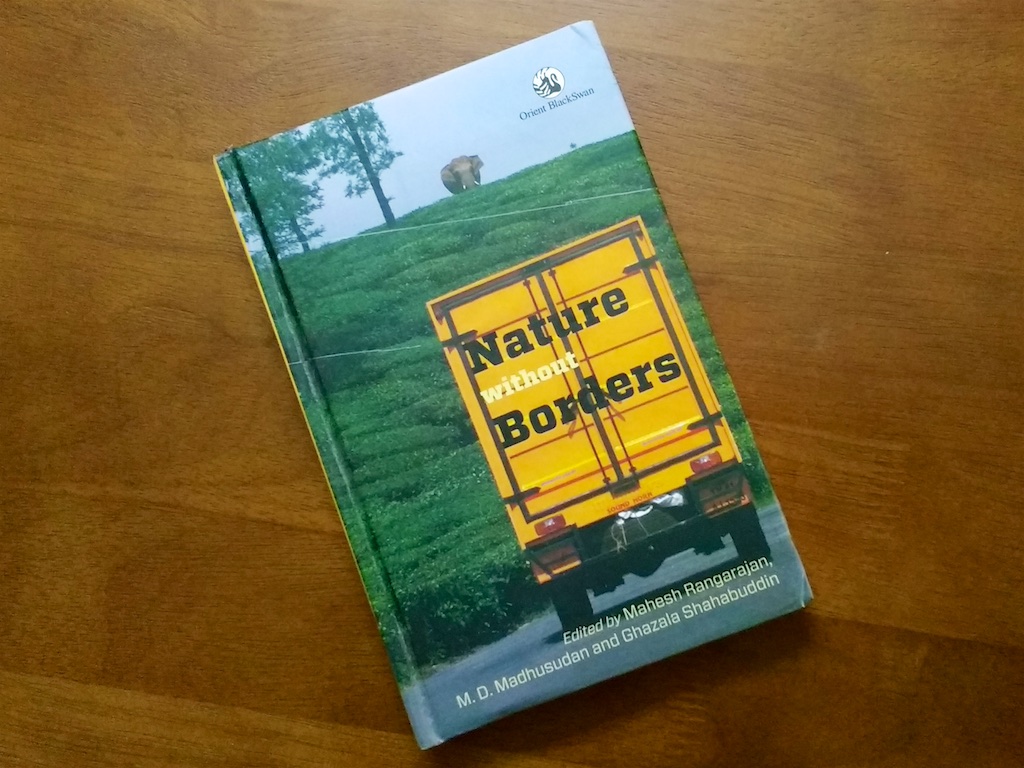NATURE WITHOUT BORDERS (Orient Blackswan)
Edited by Mahesh Rangarajan, M.D. Madhusudan and Ghazala Shahabuddin
When we think of wildlife, the mind usually leaps to Protected Areas (PAs) and charismatic megafauna. However, India’s 650+ National Parks and Sanctuaries collectively occupy just 5% of the country’s land area. So, what about the remaining 95%? How important is it for conservation? The fact is, a surprising number of wildlife species live outside PAs, in our coastal waters, rivers, Reserve Forests, community lands and, even, urban and suburban landscapes. India’s last remaining wolves, for instance, are more likely to be encountered outside PAs, as are snow leopards and many species of wild sheep that live in the Himalayan region. Gir’s famous lions have spread way beyond the PA that once contained them, and have colonized many new areas in Gujarat. Thanks to research, we also now know that some agricultural areas, notably in Maharashtra, are home to resident leopard populations that live at densities as high as in some of the best PAs. Going even further, several endangered species that absolutely need PAs for their continued survival – such as elephants and tigers – use non-PA landscapes for seasonal movement or for dispersal respectively. With many PAs having become isolated enclaves, it is vital that we pay more attention to non-PA landscapes that provide refuge to wildlife or offer habitat connectivity. And that’s exactly what this slim volume forces us to do.
The 8 essays in ‘Nature without Borders’ deal with wildlife that cannot be contained within the borders of PAs, or with habitats that may never be declared as PAs, but which are nevertheless crucial for the survival of certain endangered species. The essays provide us a window into the world of a few species and landscapes that we may be aware of, but don’t usually devote much attention to.
Perhaps fittingly, the first essay, ‘Trawling the Shorelines – Fished out and Squandered’, deals with the ocean around us, which rarely finds a mention in conservation discourse. In it, the authors lay bare the havoc caused to marine biodiversity by mechanised trawling. Indeed, so horrific has been the carnage, that not just biodiversity, but the very livelihoods that mechanised fisheries were supposed to bolster, are in danger of being wiped out.
From the ocean, the book moves to the Ganga, to talk about another species that cannot be contained within manmade borders – the Ganges river dolphin. Although the Ganga was declared India’s National River, and the Ganges dolphin named India’s national aquatic animal, both continue to suffer from a myriad of problems: pollution from the discharge of domestic and industrial effluents, seasonal flow reductions due to overuse of river water for irrigation, the impacts of massive river engineering projects and, not least of all, rampant overfishing.
In ‘Sarus Cranes, Cultivators and Conservation’, we learn about the largest global population of sarus cranes, and their near total reliance for survival on agricultural landscapes in India’s most populous state, Uttar Pradesh. This essay drives home the point that even non-forested and unprotected areas with high human densities can sometimes be crucial for the perpetuation of certain species. This is especially the case when local religious or cultural mores combine to create and sustain the right conditions.
The other essays in the book deal with subjects as diverse as wolves of the Deccan plateau, lake restoration in Bengaluru, conservation of the snow leopard, and restoration of nature in landscapes fragmented by plantation crops in the Western Ghats.
Both, the editors of the book, as well as the authors of several of the essays, acknowledge the importance of – and need for – Protected Areas, but urge us to look beyond them. The essays not only provide extremely useful and relevant information, but something of even more value – deep insights into the subjects they deal with. Rather than simply lamenting about the problems, the authors also point us towards potential solutions. The bibliography at the end of each essay is an incredible resource for anyone who wants to dig deeper.
‘Nature without Borders’ is an extremely important book for our times, and the editors are to be congratulated not only for selecting an interesting mix of essays, but also for providing an excellent perspective of the subject in their introduction. In my opinion, this is essential reading for all naturalists, conservationists, wildlife research scholars and, most importantly, India’s policy makers. The book is available in hardback and paperback, and Amazon offers a Kindle version as well.


 CI is a non-profit, non-commercial portal that aims to facilitate wildlife and nature conservation by providing reliable information and the tools needed to campaign effectively.
CI is a non-profit, non-commercial portal that aims to facilitate wildlife and nature conservation by providing reliable information and the tools needed to campaign effectively.


